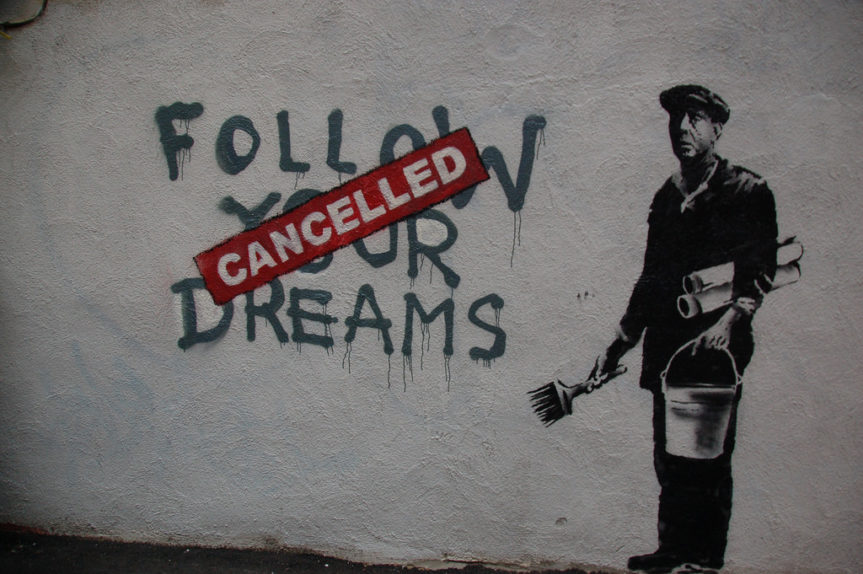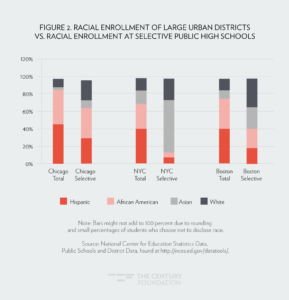Segregation won another round in New York City’s most elite “public” schools. The admission numbers are out and they are pathetic. Black and Latino children make up 67.6 percent of the students in NYC schools, yet only 10 percent of the students admitted to the selective high schools. And get this, only one—yes one—Black student was admitted to Staten Island Technical High School.
For all those charter critics who complain about segregation or creaming of students: You got a bigger mess to clean up in your own front yard before you come snooping around the charters. Chalkbeat covered the numbers in some more detail, but there is no way to spin this story positively.
Every year it’s the same thing with the specialized high schools, maybe some marginal increase, next year maybe it will be 11 percent. Maybe 1.5 Black kids will get into Staten Island Tech next year.
This should be a scandal for anyone worried about equity. These schools are gateways to better college options and they pretty much shut out Black and Latino children. And remember, we call these “public” schools, paid for by public tax dollars with a mission to serve the public.
So where is the outrage? Where are the calls for reform? Where are those critics who are so worried about the alleged segregating effect of charter schools? They seem to be notably silent on this outrage.
Let’s be clear. The most segregated charter in NYC is nowhere near the numbers of any of the specialized high schools. I challenge anyone to make a straight-faced argument that any of these schools is more “public” than any charter. This isn’t to excuse any charter shenanigans—I just want to focus on a better working definition of “public schools.” We need a definition that actually embraces our democratic ideals of inclusion, equitable treatment and transparency.
And this is not a NYC only problem, though NYC is by far the most egregious. You can see disparities in other cities as well. Though you can also see that some, like Chicago, are making substantial progress and others, like Boston, may be backsliding. But polices and political will matter in changing these facts on the ground.
Here are what the numbers look like according to a recent report
So next time y’all want to start throwing rocks at the charters while shirking the specialized school challenge, you might want to watch out. That glass house you are standing in can’t withstand scrutiny.



I could not agree more, this is a scandal of Napoleonic proportions – and there has been no progress of statistical significance, much less of educational significance, in decades.
The only way around this, if you want talented minorities, to have access to specialized accelerated academic schools, is to do what I did at Columbia Secondary School, which is to geographically segment the admissions pool, and give admissions to the top, say, 25 students in each district. Indeed Columbia Secondary School was designed as a school to counter the specialized school’s low diversity. Because districts are segregated by class, race, ethnicity, etc. you can get excellent diversity, while providing a highly challenging and accelerated education that all talented kids need and deserve. Cluster of districts could be gerrymandered with the goal of maximizing diversity, and specialized, GT, other focused theme schools created to serve students with special needs. A citywide pool based on a specialized test will never achieve that, because advantage and opportunity, are no where near distributed equally to all children, and talented kids from low income and/or low education backgrounds continue to get a second class education, especially in the primary and preschool levels. Columbia Secondary School has shown a different way, a successful way to have a diverse student body, while providing them with a unique accelerated and enriched educational experience. Its three founding cohorts have shown that its graduates get admissions and succeed in the top universities in the nation. We designed and built a similar STEM, selective school model in another country, Dominican Republic,the Liceo Cientifico, and got the same results. The school has become a beacon of hope for what is possible in a country with one of the worst educational systems in the world. Replicating this model so that each clusters of communities could have access to world class education would go a long way towards bringing equity of educational opportunity to talented low income and minority students, who are the most neglected group of all.